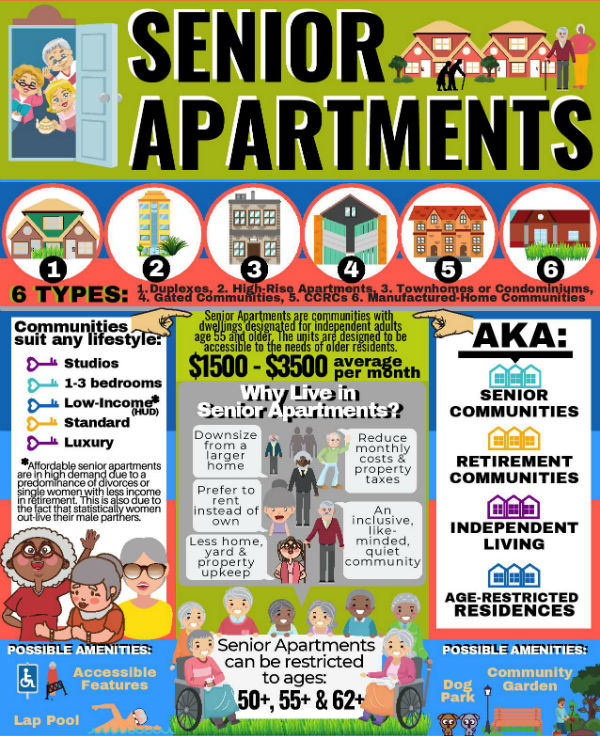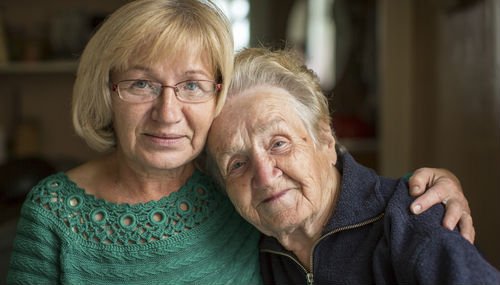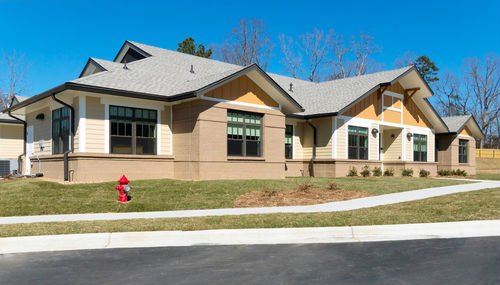About Senior Apartments

Communities with apartments designated for adults age 55 and older are available to meet the needs of aging adults. They typically don't provide meals to residents, but may offer community rooms, social activities, swimming pools, transportation, and other amenities, depending on the property. The apartments can be studios or 1-3 bedrooms and are designed to be accessible to the needs of older residents. Most provide accommodations to mobility impaired residents and may even offer emergency call systems, but typically do not provide extensive monitoring. There are a wide range of pricing options for 55+ apartment communities, ranging from those who accept public assistance to super-luxury communities.
Top Cities for Senior Apartments in the US
- Chicago, IL
- Dallas, TX
- Seattle, WA
- Los Angeles, CA
- St Paul, MN
- St Louis, MO
- Kansas City, MO
- Portland, OR
- Minneapolis, MN
- Denver, CO
- Milwaukee, WI
- Houston, TX
- Scottsdale, AZ
- Westland, MI
- Eugene, OR
- Silver Spring, MD
- Louisville, KY
- Toledo, OH
- Springfield, MO
- Phoenix, AZ
- Fresno, CA
- Clinton Township, MI
- Salem, OR
- Wheat Ridge, CO
- Colorado Springs, CO
- San Diego, CA
- Syracuse, NY
- Southfield, MI
- Las Vegas, NV
- Stockton, CA
What are Senior Apartments?
Apartments designed with seniors in mind have unique qualities that other properties don't have. The goal of a senior apartment complex is to provide accessibility in common and private areas. Many senior apartments use ramps and elevators instead of multiple flights of stairs. The apartment homes are usually one-story vs. multi-level apartments that one might find in a regular apartment complex. Some or all units may be equipped with rails for added mobility and handicapped accessible light switches, toilets and showers.
Instead of having a playground for children, these communities might have shaded seating areas outside for relaxing, reading or playing cards with friends. There might be a community garden, dog park, Jacuzzi or lap-pool instead of a water playground or sandbox designed for children on site. A senior apartment community offers adult-specific amenities that older residents enjoy and appreciate.
Senior Apartments can be purchased or rented depending on the property. The apartments can be anywhere from a small studio, up to a 3-bedroom apartment typically. Apartments include a kitchen, dining area, bathroom and living room, each vary in size and cost.
Aside from a typical apartment complex with hundreds of units, senior apartments tend not to be as large or sprawling. Types of senior apartments, or senior-specific independent living communities include:
- Duplexes
- Triplexes
- Townhouses or condos
- High-rise apartment buildings for seniors
- Continued Care Retirement Community (CCRC)
Similar to the way apartment communities are set up, the following independent living communities can also be designated for those over the age of 55:
- Single-family home senior communities
- Manufactured housing communities for ages 55 and over
A sense of community is important for aging adults who are living as a couple or solo. Senior apartments offer a place to live among those in a similar lifestyle or phase in life.
Why Consider Senior Apartments?
Many older adults reach a point in their lives where a different living option is desired. Those seniors who are living highly independent lives and need a very low level of care will find senior apartments can fit their needs. For example, an active and healthy couple who has recently retired may want to downsize in space and costs and would find a senior apartment community to be a good fit.
Senior living apartments vary in what they offer, but in general they don't provide medical staff, medical care, housekeeping, meals or a large range of activities. That said, senior apartments fulfill the needs of older generations in a number of other ways:
- Relocation closer to friends, family or regular activities
- Downsizing from a larger home
- Desiring a place to rent
- Desiring to purchase a residence
- Less home, yard and property maintenance and upkeep
- Lowering monthly costs and property taxes
- A preference for older neighbors
- An inclusive, quiet community
Accessibility elements of senior apartments (less stairs, lower cabinets, etc.) is also appealing to those looking to find a new place to live in their Golden Years. For these reasons, many seniors are choosing senior apartments over other housing options.
To ensure the integrity of the community is maintained, such as calm and quiet, children are not allowed. There is an exception to this rule for HUD-sponsored apartments. Children or grandchildren can live in low-income senior apartments for those ages 55 and over. For properties where 62 is the minimum age, there is no exception to this rule and those under the age of 62 are not allowed.
Senior Apartments For All Budgets
As with any living option, senior apartments vary in cost -- they can be luxury, standard or low-income properties. Senior apartments can also be for sale or rent.
Luxury senior apartment communities appeal to the affluent senior wanting a vacation home in another city, or desiring luxury without a large property or high maintenance costs. In contrast, standard senior apartments offer a competitive monthly rate, or occasionally 10-15% under general-age market-rate rents.
Affordable, or low-income senior apartments are in high demand due to a predominance of older women with less retirement income. This is also due to the high divorce rates among seniors over age 55, and the fact that statistically most women out-live their husbands.
The costs for senior apartments vary greatly between States, amenities, size and quality. Decisions such as buying a senior apartment vs renting is something to carefully calculate.
How Do I Qualify for a Low Income Senior Apartment?
Many seniors will find that they can qualify for a nice low-income senior apartment. Check with a regional U.S. Department of Housing & Urban Development (HUD) office for information about government subsidized housing programs for low-income seniors. To qualify for HUD housing assistance, annual household income must be below 50 percent of the median income for that area. Under most HUD programs, seniors pay 30 percent of their annual adjusted income for rent. The federal government then pays the difference.
The Housing for Older Persons Act in conjunction with HUD indicates that senior apartments must include at least one person who is 55 or older in at least 80 percent of the occupied units. Spouses over the age of 55 must apply separately in order to live with their partner at a low-income senior apartment.
HUD makes exceptions for those under the minimum age who are handicapped. Those under 19 cannot be permanent residents at an "age-qualified" senior apartment complex. Most senior apartments are diligent about maintaining these policies to keep age-restrictions enforced.
Local senior centers and Area Agencies on Aging may be able to identify affordable housing or even outline the steps for getting onto senior apartment community waiting lists. The need for senior apartments and senior housing is surpassing the supply.
Evaluating Senior Apartment Communities
There are a lot of considerations involved in choosing the right senior apartment. Things as simple as décor and counter height, to storage space and access to public transportation can make a real difference.
It is important to take time to visit a few communities, if possible, and inquire about services and staff prior to you or your loved one becoming a resident. Some things to consider:
- Take a tour. Are the grounds well-kept? Do the staff and residents seem happy?
- What is the location? Is it close to transport? Retail and grocery stores? Close to family?
- Is the parking lot well lit and is there plenty of parking for residents and guests?
- Are there safety features like a 24-hour alert system, safety pull-cord, intercom, smoke detectors, fire-sprinkler system, etc?
- Do they accept subsidies or rent vouchers?
- Are there services or activities? What are the extra costs? Is there a pool, clubhouse, fitness center or activities schedule posted?
If possible, ask to speak with current residents to get a feel for the community. Below are some more important items to consider when evaluating a senior apartment community:
- Adequate storage, closets and cupboards?
- Are stairs a deterrent or a means of staying fit?
- Is the community close to medical appointments?
- Is the area safe or is crime an issue?
- Grab bars in bathrooms, units, throughout property
- Lower cabinet height and counter height
- Accessible shower and/or tub
- Building management has competence and experience
- Laundry service
- Recreational, fitness, group or cultural activities
Senior Apartment vs. Independent Living
Senior apartments are for independent seniors who are able to care for themselves with little to no daily assistance. Unlike independent living communities, senior apartments typically do not offer additional services such as assistance with daily living, meals or transportation. These age-restricted communities are regulated by the U.S. Department of Housing and Urban Development (HUD).
According to an American Housing Survey conducted in 2011, it is projected that there will be an increase in demand for housing in 55+ communities going forward, as the share of households age 55+ is expected to grow annually, and to account for nearly 45% of all U.S. households by the year 2020.
Senior Apartments vs. CCRCs
Continuing Care Retirement Communities (CCRCs) offer a combination of independent living apartments, assisted living units and skilled nursing care rooms all available on one campus. Unlike a senior apartment community which typically offers no daily living assistance services or skilled nursing, CCRC residents can transition to other areas within the community that will serve their increasing care needs. CCRCs have evolved over the past several years and offer enticing service packages and entrance-fee options. Providing 24-hour staff and security, gourmet meals, religious, social and leisure activities, housekeeping, laundry, transportation, wellness and fitness programs, CCRCs are an attractive all-inclusive housing option for seniors.
CCRCs are governed by state regulations in most states, and typically are classified as an insurance model and governed by the state department of insurance. Each of the components making up a CCRC are subject to separate regulations. The housing units may be regulated at the local level, the assisted living regulated by the state, and the nursing home portion of the community is governed by state and federal regulations.
How Much Do Senior Apartments Cost?
The costs associated with senior apartments vary, but it is significantly less than a CCRC, a nursing home, or even assisted living. The monthly rate for senior apartments communities vary mainly due to size and location, with the average cost ranging from $1,500 to $3,500 per month. Some communities require an entrance fee, also called a "buy-in" fee, while others only require monthly rent. Some apartments can be purchased outright, or they can be purchased as part of a CCRC.
How Do I Pay?
Similar to any long-term-care option, senior apartment costs and options vary by area -- it is important to explore each facility, ask questions and read over agreements carefully to be sure the community offers what is desired. Many senior apartment rentals are income-based to maintain affordability for residents. Some residents are eligible for subsidies or vouchers to help them pay.
Long-term care insurance, life insurance, an annuity, social security and a few other sources may help pay some of the costs of a senior apartment community, but most residents pay out-of-pocket for their living expenses.
Long-Term Care Insurance
Long-term care insurance is a policy that is purchased through a private insurance company. Similar to health insurance policies, the price varies greatly depending on age, general health and amount of coverage needed. Coverage could be denied for people with preexisting conditions. Not all insurance policies will cover senior apartments, so be sure to read the fine print.
Medicaid
Medicaid is a Federal and State health insurance program for those with low income and limited assets. Administration of the program varies by state, according to the Centers for Medicare and Medicaid Services (CMS). Medicaid does not cover the costs of senior apartments but may pay for services used while there, such as skilled nursing or home health visits.
Medicare
Medicare is a federal government program for those 65 or older with low income and limited assets. It generally does not pay for senior apartments but it will cover skilled nursing or home health services that may be used while living at a senior apartment community.
Private Funding
In situations when costs aren't covered through other means, paying via private funds is an option. Sources of private funds for assisted living include retirement accounts and 401Ks, savings accounts, annuities and insurance plans (including life settlements), trusts and stock market investments. Home equity and bridge loans can also be used when transitioning to a senior apartment community. Social Security can also be used as a means of paying.
HUD Section 202 Supportive Housing for the Elderly Program
Low-income elders can apply for financial assistance to cover a portion of their senior apartment rent. To qualify for assistance, a senior (62 years and older) typically must have an income equal to or less than 50 percent of the area median family income, adjusted for household size. Section 202 housing units are not widespread and they tend to have lengthy wait lists. More information can be found on the program website.
Further Reading on Senior Apartments
- Decorating a Senior's New Assisted Living Apartment
- Paying for Independent Living
- Continuing Care Retirement Facilities: Understanding Services, Contracts, and More
- How Senior Living Communities Help Maintain an Active Social Life
Top Articles in Senior Apartments
View All
Advantages of Retirement Homes
Retirement homes, also known as senior apartments, are senior housing options that can work well as a bridge between living at home and moving into an assisted living facility. Essentially like independent senior living communities, but with fewer amenities and services-and lower costs-retirement...More
Read More
Choosing the Right Senior Care
Perhaps a pair of parents or grandparents is feeling exhausted trying to maintain a house that has become too big for them. Or maybe an elderly loved one can no longer cook, or requires assistance with other day-to-day tasks. These are just two of the many situations that can tell you it's time to...More
Read More
About Continuing Care Facililties
Age isn't just a number. It's instead a series of changes, with individuals constantly transitioning through different physical and emotional states. Every year seems to bring a new form of well-being - some good and some bad - and adapting to those forms often proves challenging. Challenges with...More
Read More

 Your Information is Processing
Your Information is Processing